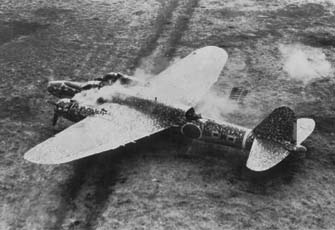@High Seas,
High Seas wrote:
PS to George and Setanta - here's the definitive account of Midway from the point of view of the Imperial Navy, and it disagrees with both of you:
Well I read your link - evidently the forward to a much longer narrative. From what it suggests is coming, I see nothing at all that contradicts or even puts a new light on anything at all that I wrote. On the contrary, what is provided tends to confirm the description of the battle and its significant elements that I gave.
The authors appear to go to great lengths to dilute the significance of Admiral Nagumo's decision to arm and launch the (totally unnecessary at that moment) second air strike at Midway Island, or at least put it into a more favorable context. However, they make no suggestion that it did not create the tactical vulnerability that led to their defeat, and they offer no new information on it. Certainly this point is universally accepted by all the historians of the engagement.
The authors explicitly acknowledge the folly of wasting two Japanese carriers (albeit small ones) on the attack in the Aleutians -- a costly enterprise that gained Japan nothing at all, and displaced forces that might have been crucial at Midway -- This was a central element of my argument.
The authors also assert that a greater understanding of the history and origins of the Imperial navy is needed to fully understand the flaws in the Fleet Commander, Yamamoto's plan at Midway. Though they don't elaborate on this point, I suspect their meaning has something to do with the evident fixation of Japanese Naval strategy on crucial, decisive battles - fleet engagements - that determine the outcome of major conflicts. This fixation (or at least persistent tendency) was evident in their strategy throughout the war). I explicitly acknowledged this, suggesting it might be a consequence of their stunning success in 1905 against the Imperial Russian fleet at Tushima, an event that propelled the then new Japanese Navy to international prominence and which produced its first iconic leaders.
Beyond that they suggest that a more detailed understanding of Japanese carrier operations is required to properly understand what took place. They go on to emphasize the incredible string of victories that preceded the engagement at Midway; the operational strain on men and equipment this required; and the then incomparable state of training and material readiness & proficiency of Japanese carrier aviation. All of these points are consistent with my description - indeed most were explicitly stated. What might have been the inferred peculiarly Japanese constraints on carrier operations, I do not know. The facts that carriers of that era could not launch and recover aircraft at the same time; or that a carrier deck configured for the launch of a major strike is "locked" until the aircraft are launched; or that the late decision to rearm the aircraft so positioned with different weapons would extend the period in which the decks were "locked"; or, finally, that in such a configuration their defensive fighter cover could not be refuelled or relaunched -- were common to all carrier operations then - and remain so to a lesser degree today. These are factors, the reality of which I know in far greater detail than any of the historians cited here.
There were many other options available to Admiral Nagumo when he received the not surprising word that resistence at Midway was such that more air strikes (or other bombardment) were needed before the invasion force was put ashore.
(1) He could have simply waited and focused on the anticipated engagement with the U.S. carriers. The victory over them, which was the central goal of the vasat enterprise anyway, would have left him ample time to take care of Midway later, and at his lesiure.
(2) He could have requested that Admiral Yamamoto, then embarked in the large battleship force one hundred or so miles behind him, move forward to escort the invasion force and bombard the island with their huge naval guns (we had nothing with which to counter them).
(3) He could have launched a smaller strike involving (say) only two of his carriers, leaving two and their air wings in reserve for a surpise discovery of the U.S. carriers, should it occur.
Any of these choices would likely have yielded a far better outcome for Japan, possibly including a complete victory. The unwise choice he made involved putting the whole operation and his most valuable forces at risk for, at best trivial, gains. In human terms such errors are quite understandable - their equivalent is the rule, not the exception, in major enterprises of all kinds, military and otherwise.
The Americans, with decidedly inferior forces, played their hand, both strategically and tactically, without error or distraction from the central issues before them, even in the midst of the uncertainty & ambiguities that surround any battle and despite serious tactical setbacks. That they did so is itself unusual. That too proved a decisive factor in the outcome.
Setanta accuses me of a Navy centric or otherwise myopic view of this and other matters. That is a rather flabby basis for the defense of his "dumb luck" thesis. I will confess though to a sentimental attachment here. I was priviledged in the late 1970s to command a carrier attack squadron that had been involved in the Battle of Midway.
In any event I am just back after a too-long business trip back East -- enjoying the comforts of home & napping amidst all the busy preparations about me for the coming holiday.
Setanta is a good guy - very smart and unusually well read & informed. I always read and enjoy his historical digressions, and respect his understanding and interpretations. However, he takes disagreement very badly. Despite this I hold him in high regard and consider him a friend.
Same goes for you Helen.
Merry Christmas to you both.

